Canon Fodder: Shippin’ Out
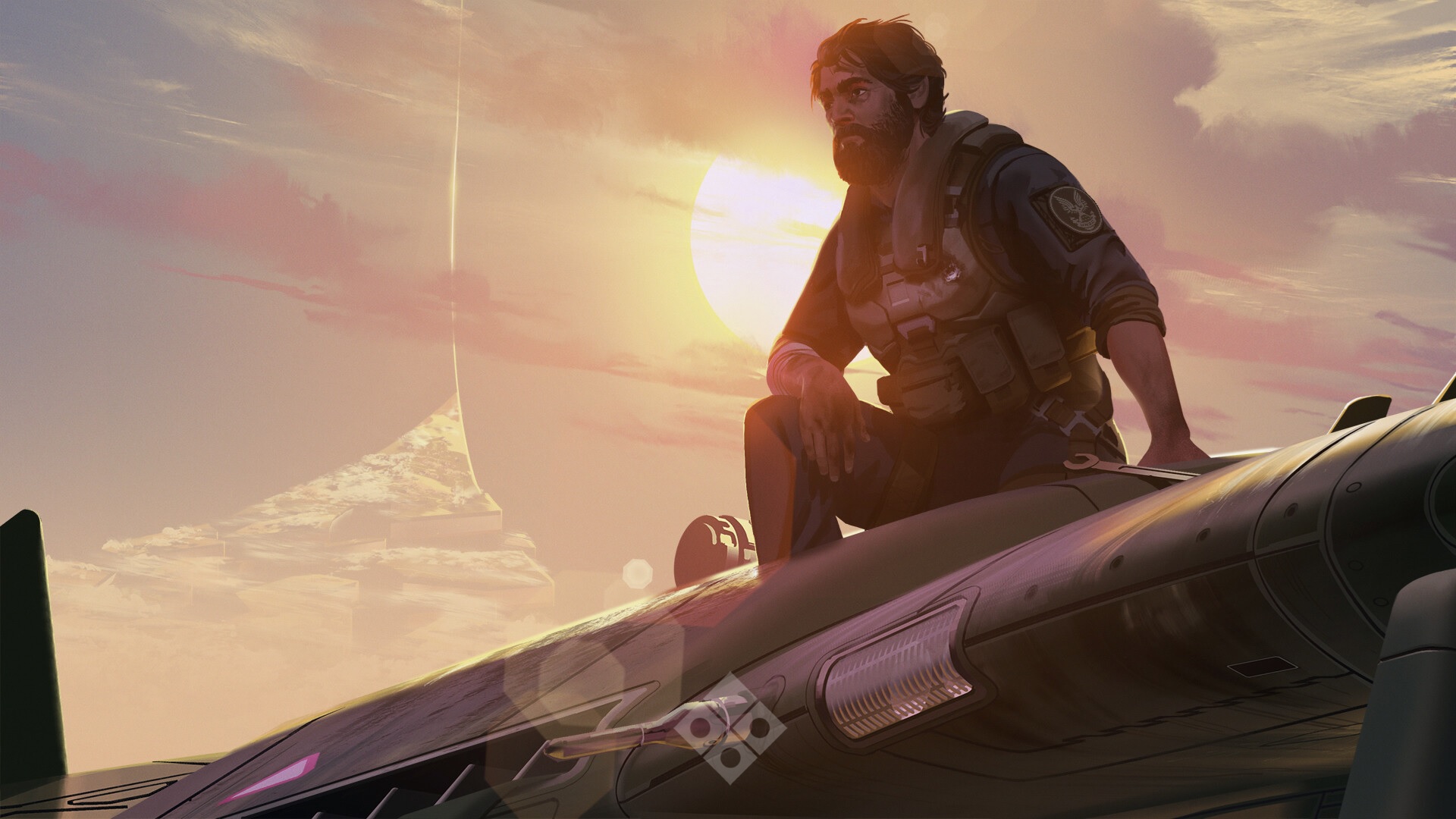
Welcome back, fiction fans!
Don’t you always find that January feels like something of a malaise, like some kind of stopgap purgatory, before you realize we truly are into the new year? We all have our ‘pick me ups,’ and if you’re here then I would assume it’s the promise of new Halo lore that gets the gears turning and reignites the synapses.
In this issue, we’ve got a lot of great stuff to get through—we've got more to share about Troy Denning’s next book, we’ve got some new spaceships and vehicles to detail, we’ve got a new section making its debut into the Canon Fodder rotation, and more...
Let’s get right into it!
CASTAWAY
Last issue, we went over the treasure trove of things you’ve got to look forward to in 2022, including The Art of Halo Infinite (available now), the Halo Encyclopedia (March 29), Kelly Gay’s Halo: The Rubicon Protocol (June 28), and then we teased a certain new project from the esteemed Troy Denning.
Of the latter, I recall saying that the premise made my jaw drop to the floor, that we’ll be returning to a location from one of Troy’s previous books, and that this story will be told through some familiar eyes.
You’d like to hear a bit more about that, wouldn’t you?
It would be cruel if I just dropped that in there as a reminder and then didn’t actually say anything new, wouldn’t it? I mean, I’ve been seeing everybody’s guesses over the last month and, on this rare occasion, none of you came close. ;)
"2559. Formerly one of the Covenant’s greatest and most fearsome warriors, Arbiter Thel ‘Vadam is now allied with his former human enemies while deeply entrenched in leading the Sangheili people to a new era of unification. But his aspirations are under constant threat, whether by the dangerous, warring factions of rival Sangheili keeps, or the relentless shadow of oppression spread by the renegade artificial intelligence Cortana.
ㅤㅤ
An opportunity to break Cortana’s chains has suddenly presented itself through the rumored existence of an ancient artifact located on the hostile world of Netherop. Spartan Olympia Vale, trained with the skills to live and thrive among the Sangheili, also recognizes this alien prize as an essential means to aid humanity in reaching the same goal of freedom. But behind the scenes, both ‘Vadam and Vale are being manipulated by a mysterious figure with their own agenda. And to make matters worse, all involved are unknowingly placing themselves at perilous odds with forces beyond their comprehension."
We’ll have a full cover reveal of Halo: Outcasts for you in the future, but—for now—you can sit comfortably with the knowledge that we will be seeing the dynamic duo of ‘Vadam and Vale together on a mission of great significance with some fascinating ties to fiction both past and present.
OFFICE OF TELEVISUAL INTELLIGENCE
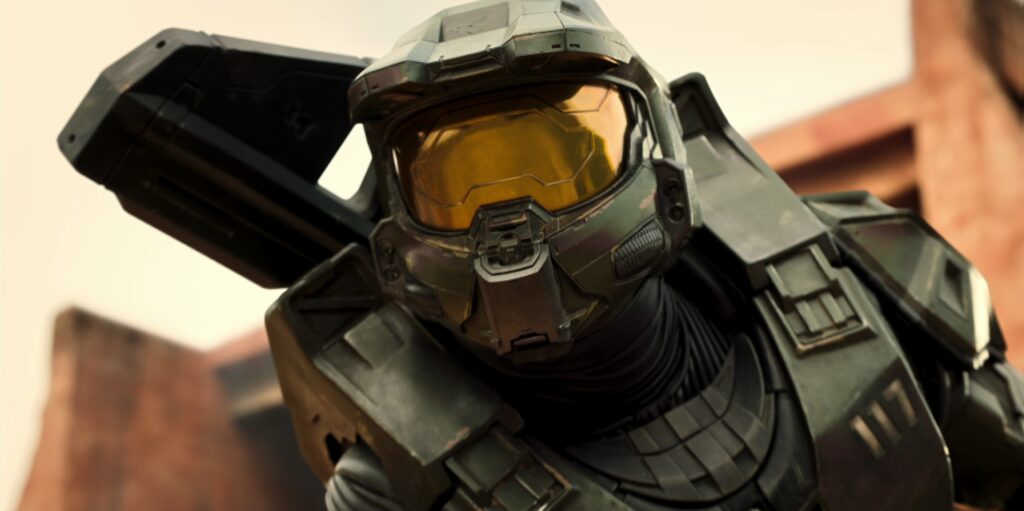
Our first Silver Debrief went live just last week, which you can catch up on here!
What is the Silver Debrief? It’s our central blog series for the Halo television show, which just saw the release of its latest trailer last Sunday (and yes, we will absolutely be diving into it in our next Debrief).
The first issue provides a season update from Kiki Wolfkill; it then delves into a Q&A section with Frank O’Connor regarding the nature and intent of the ‘Silver Timeline,’ an independent branch of continuity separate from the core canon; and finally breaks down some of the major settings, characters, and stories depicted in the first look trailer shown at The Game Awards 2021, with the help of Kenneth Peters.
Just as the Silver Timeline is separate from core canon, the lore and continuity of all things related to the television show will be covered in the Silver Debriefs. Canon Fodder will continue to be the home for all things core canon related, though—as is noted in the Silver Debrief—there may be some cross-pollination of elements in the future. Dr. Halsey’s personal Zheng He-class courier, for example, was originally ‘penciled in’ for a core canon project before Silver started but ended up making its debut as a fully realized model and physical set in the show.
And speaking of ships...
CIVVIE CRAFTS
One of my favorite aspects of any sci-fi universe is the spaceships. How could it not be? From an early age, I was raised on a strong diet of Gerry and Sylvia Anderson’s Thunderbirds, Stingray, and Captain Scarlet, in which vehicles of the ground, sea, and sky played as much of a central role as the characters who inhabited and piloted them. I remember that first look at the Lambda-class T-4a shuttle at the start of Return of the Jedi, its wings folding outwards after deployment, which seemed to me at the time to be the coolest thing ever (and I longed for many years to get the LEGO set – I never did, so I made it myself out of everything I had).
Of course, Halo is no stranger to ships playing such core ‘character’ roles either, whether it's reading about the astronavigational feats pulled off in some of the early novels, or gazing up at a CAS-class assault carrier looking like a colossal, armored whale sat imposingly over the horizon, or storming through the imposing interior of the Ghost of Gbraakon and seeing the machines of war that are deployed from the underbelly of these reverential dreadnoughts...
But then, there are ships you don’t really see beyond the primary application of military power. What do basic transport vessels look like? What haulers are used to move great masses of essential resources around? How many people are typically aboard a survey ship and what do recent events mean for how they’re deployed?
In the Halo universe, small, slipspace-capable cargo vessels are a relatively recent innovation for humanity as translight engines have become more compact. Here are just a few such examples of non-combat vessels that see everyday use across human space.
MULZAC-CLASS TRANSPORT
ENTERED SERVICE: 2520
MANUFACTURER: Martian Metals
CREW: 8
LENGTH: 685.7ft (209m)
Economical, adaptable, easy to maintain, and available in a wide number of configurations, the Mulzac is also easy to modify after purchase, and very few remain in their stock configuration.
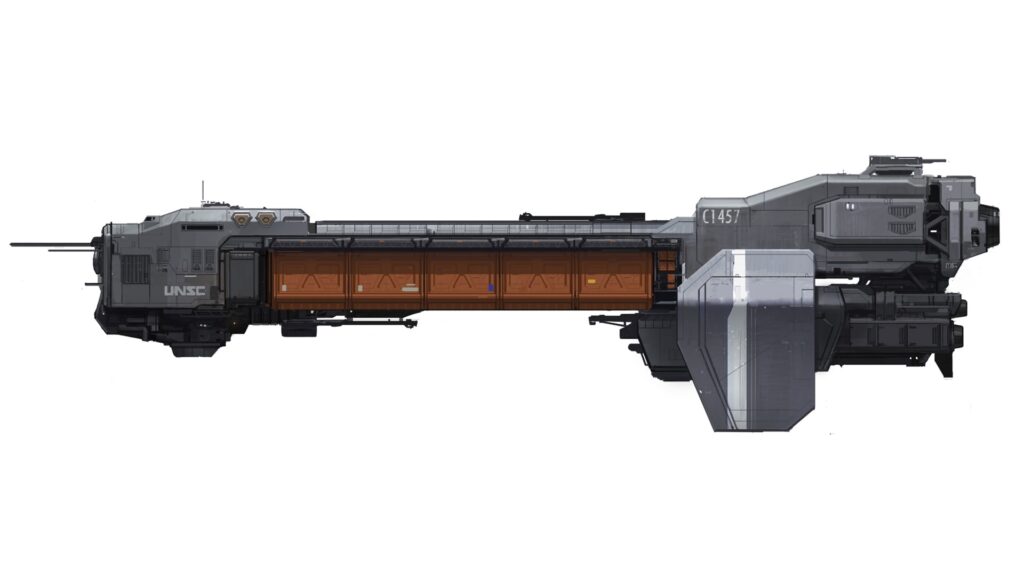
HUYGENS-CLASS SURVEY SHIP
ENTERED SERVICE: 2499
MANUFACTURER: Aerofabrique SA
CREW: 10 + 30 passengers
LENGTH: 278.9ft (85m)
The Huygens-class is the UEG's premier survey vessel, with missions that range from surveying glassed worlds to charting slipspace routes to the known Halo rings. In the aftermath of the Created rebellion most were pressed into military service, using their advanced sensor arrays to evade Guardians and scout potential raiding targets.
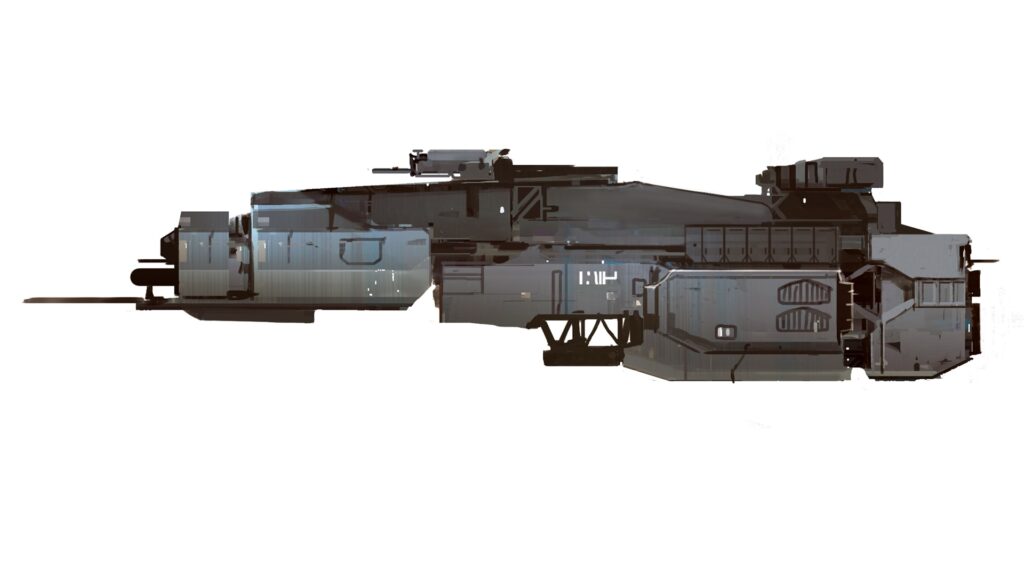
JENNET-CLASS INTRASYSTEM HAULER
ENTERED SERVICE: 2499
MANUFACTURER: Halifax Spacewerx
CREW: 3
LENGTH: 242.8ft (74m)
With an obscene thrust-to-mass ratio, the Jennet is a powerful tug, with a well-deserved reputation for moving incredible masses without issue. When hulks, asteroids, and massive cargo pallets need to be moved between worlds or up a gravity well, the Jennet is certain to be one of the first ships on call.
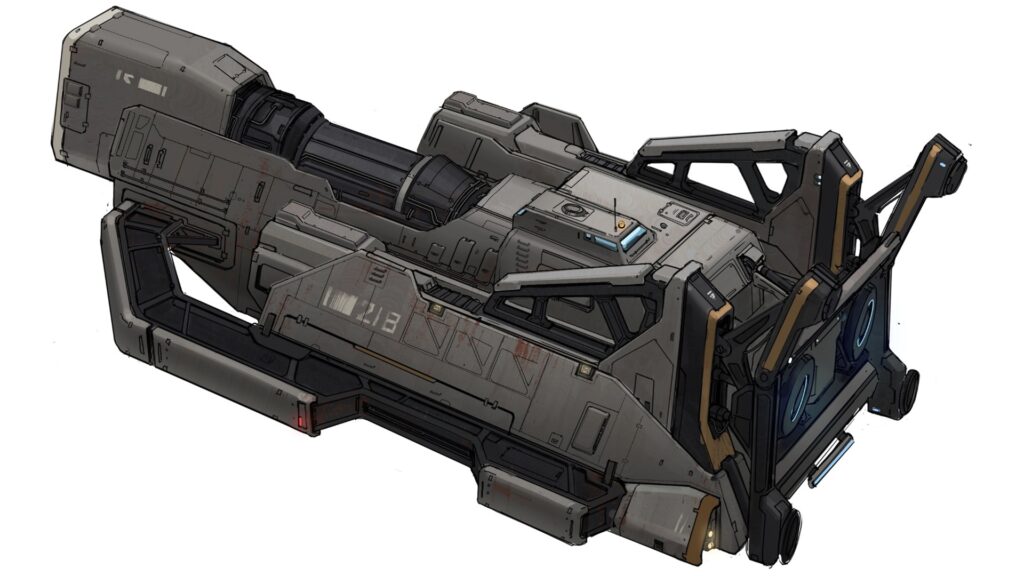
REGAL RIGS
While we’re on the topic, let’s give a look-in to some of the other non-combat vehicles you can find in Halo Infinite.
BRAITHWAITE CEROMAX
Braithwaite Ltd started off as an industrial transition firm, assisting in logistics execution for fledgling colony outposts as they grew in population and complexity. Eventually, those efforts led to full-scale first-party engineering efforts, including a fleet of light cargo vessels and terrestrial vehicles. The Ceromax is a fine example of the latter—a sturdy-bodied truck platform that has become a staple in colonial rehabilitation efforts across the UEG.
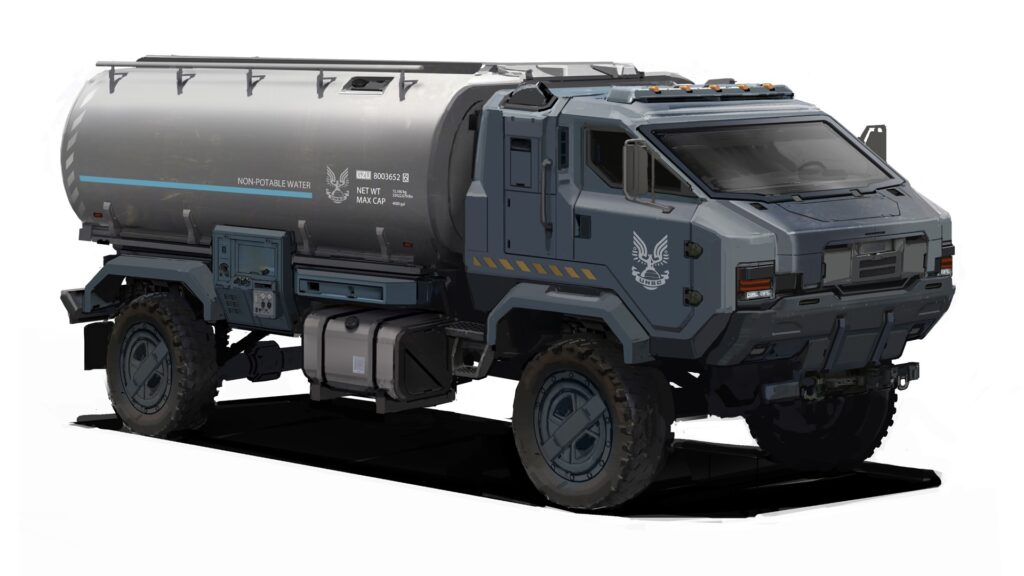
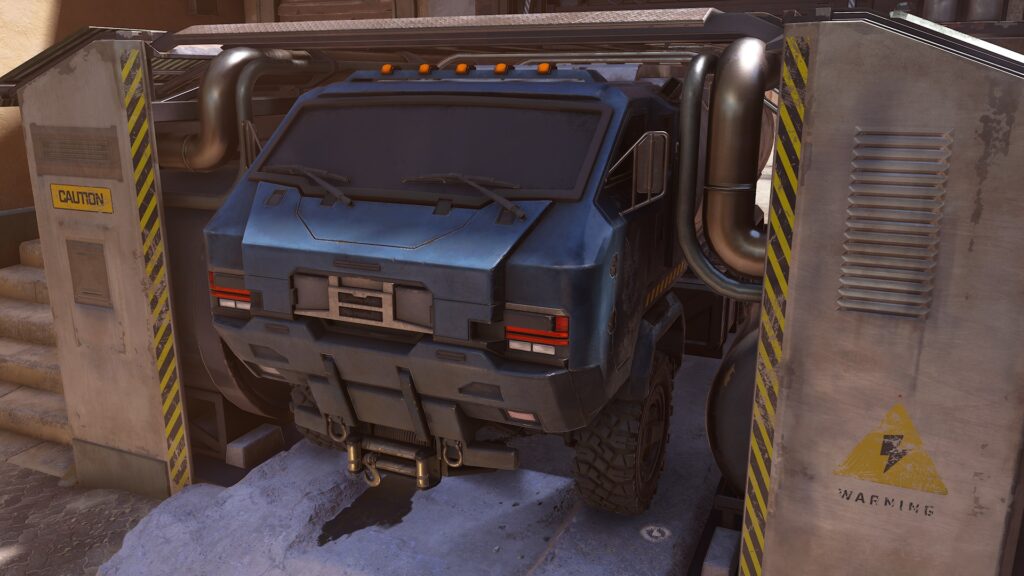
AMG TRANSPORT DYNAMICS H9 MID-CAPACITY HAULER
AMG Transport Dynamics produces a range of duty-application vehicles for military service, though it is best known for venerable stalwarts such as the M12 Warthog. The H9 is a late-war addition to their offerings, built to tackle an expansive and diverse variety of cargo transport, tow and recovery, maintenance, salvage, and munition handling missions with modular accessory kits and in-cab automation tools.
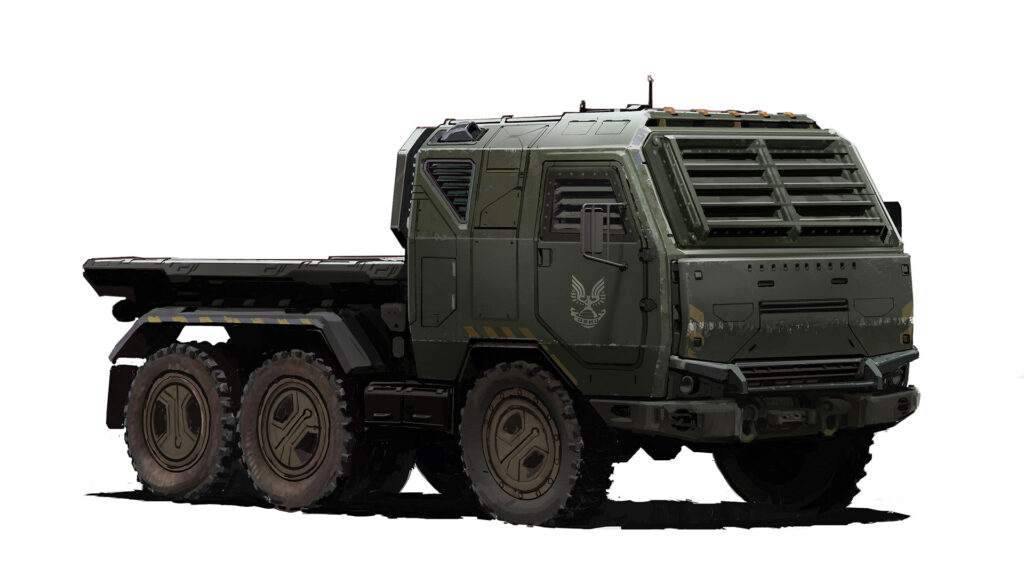
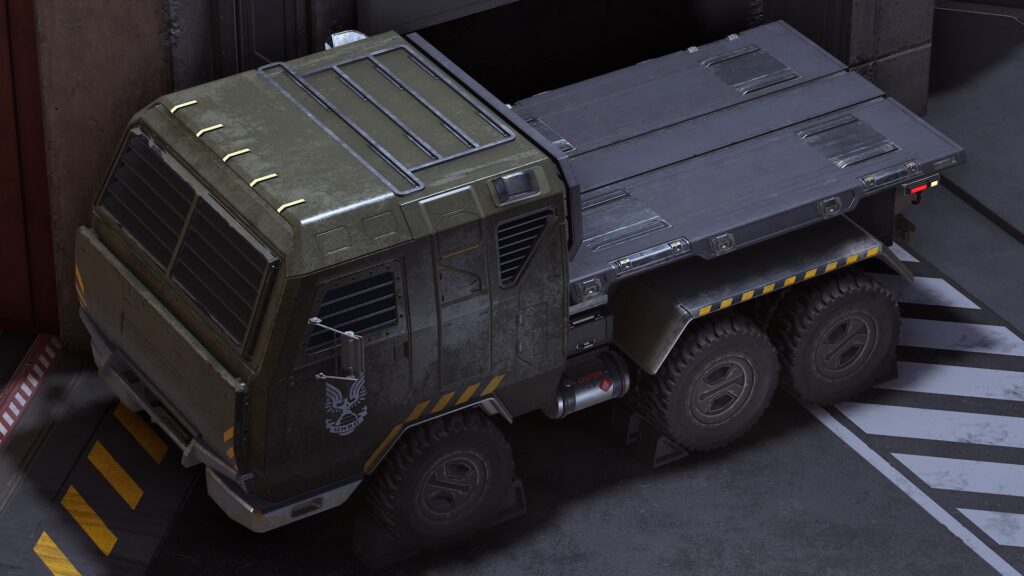
TRAXUS SL-5 CARGO TRANSPORTER
The Traxus SL-5 series cargo transporter combines unparalleled ergonomics and maneuverability with rugged durability and dependable performance. Its compact EV drivetrain provides smooth acceleration with a strong torque response and lifting performance while maintaining deft travel dexterity in restricted spaces and congested areas. Its stated capacity lands within 1350-1900 kg, but Traxus line designers would tell you it can the carry the weight of a world’s expectations.
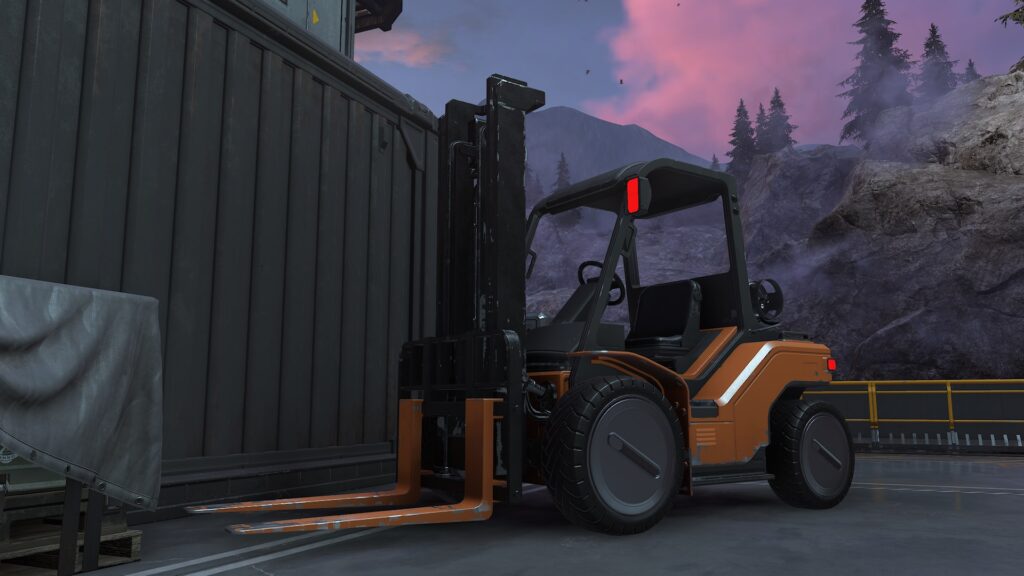
CONCEPT FODDER
A new section we’re bringing to the Canon Fodder rotation offers something of a more analytical lens to the lore. To know the facts is one thing, but to explore their interconnectivity—their emotional and thematic resonance, and all the nitty-gritty details—can help to develop a new understanding of these stories.
For our first topic in this new section, let’s talk about concept art.
You may have recently seen an art blast of some of the incredible work that went into Halo Infinite from equally marvelous artists, stirring the imagination with the compelling possibilities and ideas of scenes unseen.
For this section, we wanted to give a bit more of a peek behind the curtain and explore in a bit more detail what role concept art plays in game development.
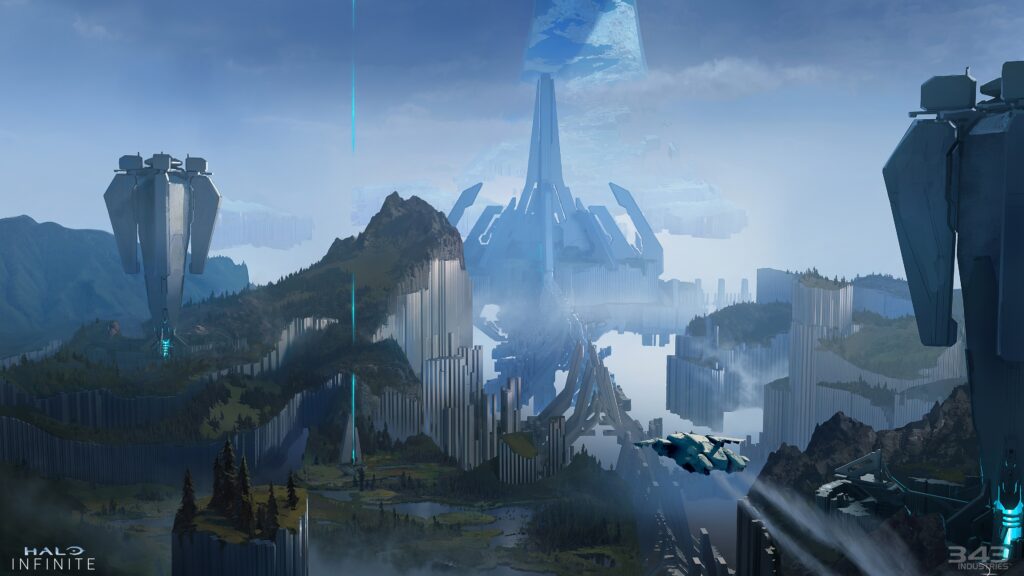
As with any creative medium, video game development has to start somewhere. When the possibility of what stories we might tell are discussed; when designers need to articulate what features, moments, and encounters are in their heads; when artists need to explore aesthetics, moods, tones, characters, world designs (and so on); concept art is one of the most valuable tools in the preproduction arsenal.
For example, one of the core pillars of Halo Infinite was its emphasis on the legendary visual legacy of this storied franchise. Many concepts were created to provide an analysis and reference points to capture the quintessence of what connects, say, a Forerunner structure to that legacy aesthetic. At the same time, the look and feel of the type of Forerunner architecture introduced in Halo 4—that which gains greater complexity as it comes to life, the materials, the glowing ‘veins’—is something that continues to exist alongside that as Zeta Halo awakens. Even the reformation spires evoke the monolithic edifices of similar towering structures that came to form the basis of Requiem’s identity.
Indeed, the hexagonal pillars, which took root as consideration was given to broader conundrums about breaking up artificial landscapes in an interesting and distinct way while giving Zeta Halo a more unique visual identity, was an architectural feature of Halo Wars 2 and Halo: Spartan Strike.
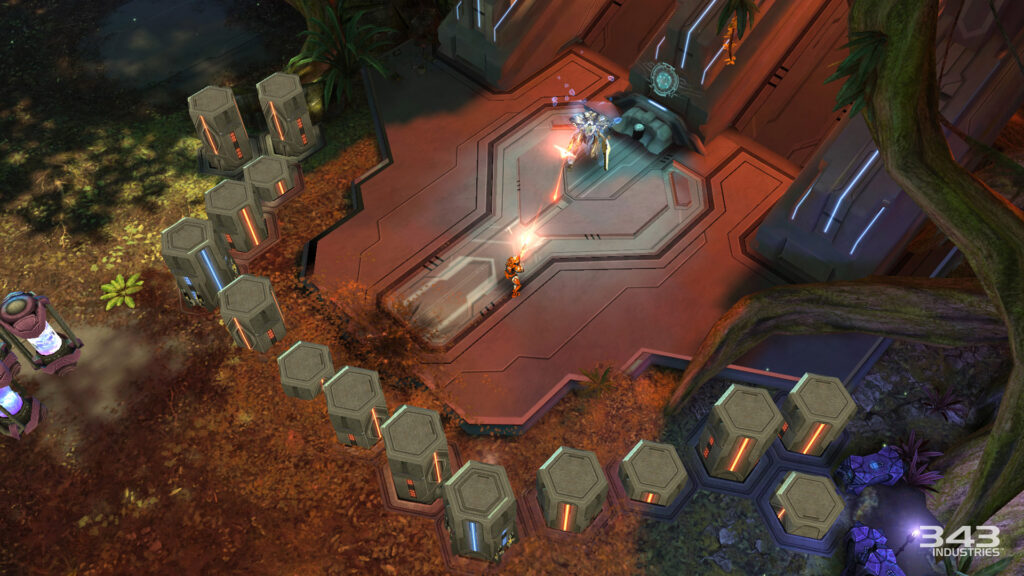
‘Legacy’ as a pillar is not necessarily done to the detriment of other visual styles, but brings those things back to the foreground in a way they haven’t been for well over a decade. And these styles can coexist and complement each other quite comfortably.
This also ties into the overarching visual philosophy of the Banished. Their faction is built on a great cauldron of familiar ingredients from all over the franchise’s history, enhanced and augmented with modifications that characterize the Jiralhanae.
Concept art is the bridge between an idea and action, naturally existing in a space outside the realities of production that speak to infinite possibilities—glimpses into stories that are often more fodder for inspiration than actual canon. Some of those stories will be told, some of them will not. Some will get told, but in ways that weren’t originally anticipated. They might move to other external media, or they might be more suited to in-game audio logs, or even environmental details, as the duo of time and resources shape the most critical paths for production.
Early on, we might ask a question like “What if the Master Chief was defeated?” which raises a series of additional questions artists might answer differently. Defeated—how? By whom? Where did this take place? Do we see the moment of defeat, or is it more helpful just seeing the aftermath and being left to wonder how we got here?
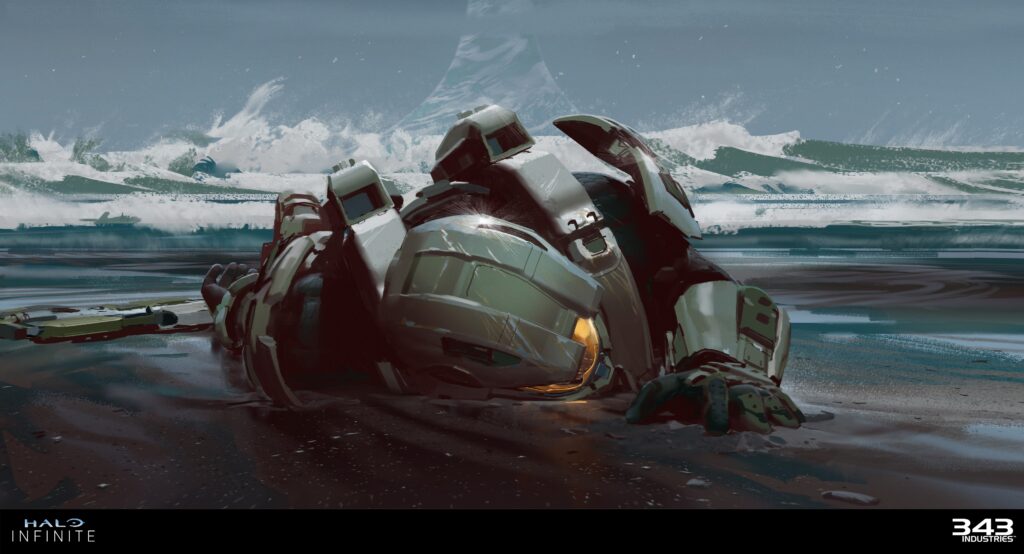
A personal favorite of mine to illustrate the above example is this image from David Heidhoff of the Master Chief washed up on the shores of a Halo ring, Crash Bandicoot-style! It’s such a beautifully evocative piece that asks more questions than it answers, one can imagine the gears those questions start to spin across a variety of studio departments with something like this as a starting point.
Over time, that idea might evolve in subtle ways as some of those questions are answered and commitments are made. This stunning concept from Ruan Jia (below) could almost be thought of as a ‘spiritual sequel’ to Heidhoff’s above, where it continues running with the core question of “What if the Master Chief was defeated?” but there is perhaps more development context available to the artist as production gets further along. Sometimes these alignments happen when there is greater parity with production and sometimes they can happen purely by chance.
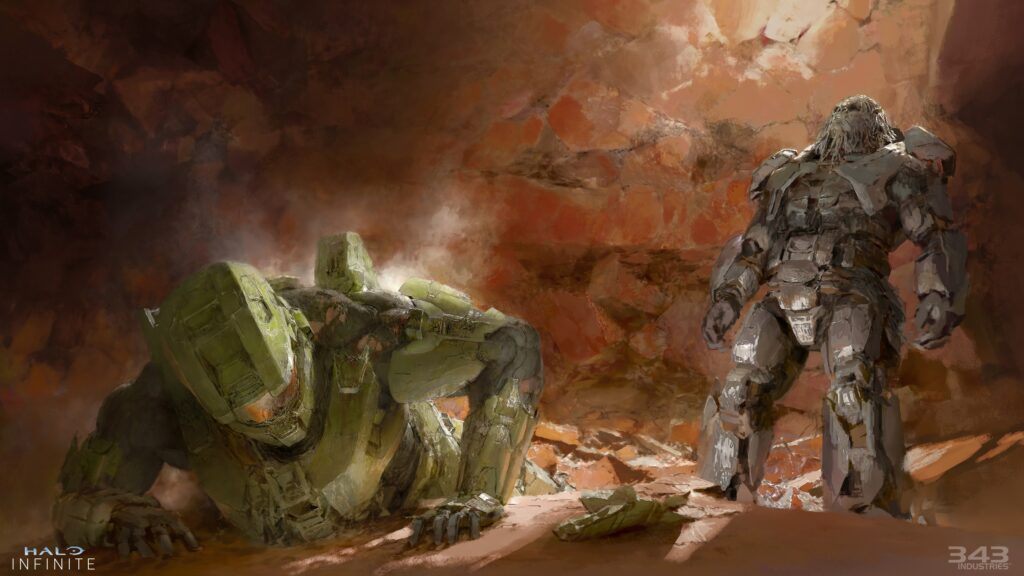
In Halo Infinite's campaign, the game opens with the Master Chief being defeated by Atriox, a momentous moment that connects to some of the themes around the Master Chief as a character that have been explored from Halo 4 (echoing also, in some ways, the introduction of the Didact).
The core idea of the Master Chief ‘being defeated’ is what you see, as that is the inciting incident for the Chief’s story which has evidently been the visual throughline in these images. But game development itself cannot be restrained by or beholden to any specifics from concept art. That is to say: it is not indicative that Halo Infinite was going to begin with the Chief washing up on the shores of Zeta Halo, or that we ever "planned" to have the Chief fight Atriox in a cave in his Mark VI MOD armor.
As those of you who have picked up a copy of The Art of Halo Infinite may have read, it's an exciting opportunity to showcase the sheer breadth of what’s involved in the process of creative ideation to make these games and tell these stories.
COMMUNITY Q&A
Next up, another batch of answers to community questions.
TheEld: "How did the Chief and everything else get carried through slipspace along with Zeta Halo when it jumped away from Ephsu I?"
Halo rings require an extraordinarily large slipspace portal to move to new firing positions or elude Flood incursions. You may recall in Halo 2, Halo 4, and Halo 5: Guardians that nearby objects may be caught up in the transit and carried along to the destination point.
Morhek: "Is the 'Banished dreadnought' synonymous with the karve ship the Banished also use?"
The Banished dreadnoughts that appear in Halo Infinite are their own class of ship, separate from the karve.
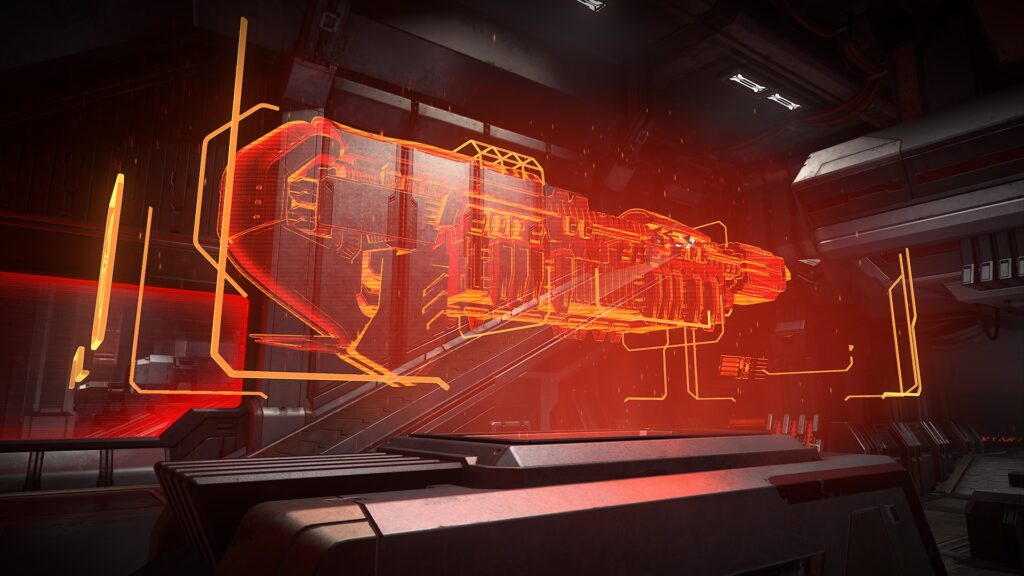
Patmaster1995: "So we know that starting with Halo 4 and onward that multiplayer is canon and is a simulation. But what about the multiplayer maps from the original trilogy? Are they canon?"
Broadly speaking, it’s safe to assume that most multiplayer maps from across the series are available as simulated locations in War Games.
Pathogen188: "Any insight as to what the ultimate fate of Delta Company was? Last update was in 2009 and the statement itself was 'unknown.'"
Delta Company was approved and funded by ONI, but it is thought induction and training never began. The candidate count and operational specifics for this company are currently unknown, as those records were lost in the final days of the Covenant War.
ArthurJack_AW: "The Banished ships that appear in Infinite – were they entirely designed and built by the Banished themselves?"
The Banished’s origins as raiders means that they have procured many ships from the Covenant and elsewhere, but as the faction grew Atriox diverted resources into rapidly bolstering the size and scale of their fleet by utilizing both Jiralhanae and Covenant-sourced designs.
The dreadnoughts seen in Halo Infinite were built from repurposed and heavily modified Covenant hulls by the Irusk Workshop. A more extensive look at the Banished’s warships is just another thing you can look forward to in the Halo Encyclopedia.
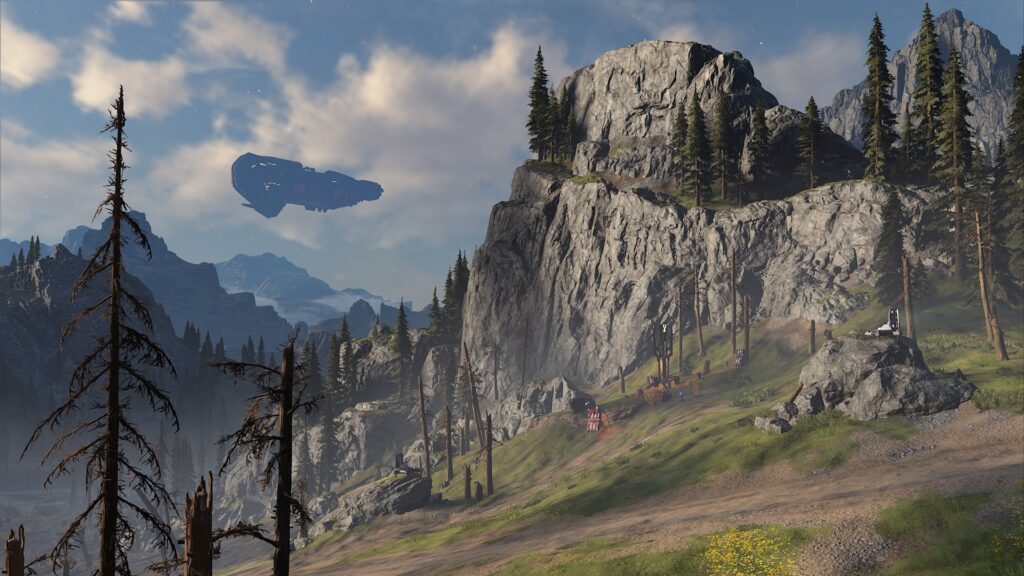
And with that, another Canon Fodder comes to an end.
Before bidding you all a fond farewell for now, keep an eye out for those #FictionFriday tweets that go out on our official @Halo account. With this new era upon us, we’ve got a slew of byte-sized Halo Infinite-focused fiction going out and you may find some fun nuggets of lore within.
Be well, play Halo, we’ll be back before you know it!
